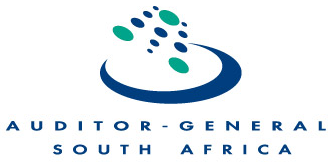Service delivery
Infrastructure for service delivery
The basic services that the people of South Africa are entitled to receive – education, healthcare, housing, transport, water and other government services – cannot be delivered without infrastructure. However, the existing infrastructure cannot support the growing demands in the country and there is a backlog in providing the required infrastructure for basic services such as water and sanitation. The country’s existing infrastructure must also be properly maintained to ensure that it remains in a workable and safe condition throughout its lifespan.
Government has responded to these needs through aggressive infrastructure investment programmes, which are a critical catalyst for creating the multiplier effect that drives economic activity (through which government spending intended to stimulate the economy increases private spending that additionally stimulates the economy). Infrastructure investment is also a key component of the Economic Reconstruction and Recovery Plan introduced in 2020 to improve economic growth. In 2021-22, government budgeted R161,5 billion for infrastructure spending as per the public sector infrastructure expenditure and estimates issued by the National Treasury.
Every year, we audit infrastructure and report to accounting officers and authorities and their executive authorities on the status of selected projects as well as on deficiencies and inadequate infrastructure maintenance. We focus on critical infrastructure such as health facilities, schools, housing, roads, railways, and water infrastructure, as failure to deliver on the promised new infrastructure in these areas directly affects the public and deprives them of the basic services they are entitled to. We also share our findings with Parliament and provincial legislatures, and emphasise the money being lost due to poor project management and limited maintenance, report what we observe to be causing the weaknesses, and make recommendations for improvement. But despite this, we see little improvement year on year. Everyone in the accountability ecosystem should urgently play their part to address these issues. Where weaknesses in infrastructure management resulted in financial loss, we issued material irregularities.
Examples of material irregularities related to infrastructure management
In the remainder of this section, we share findings from our audits of infrastructure projects and maintenance in the key service delivery portfolios.
Infrastructure project delivery
There is consensus that the significant investment being made in infrastructure development is needed to supply basic services for the people of South Africa and that there must be consistent and tangible returns on this money spent.
Our audit work incorporates numerous site visits to inspect progress and quality of projects. We have found that all too often, infrastructure delivery projects have been delayed, are costing more than planned or are of poor quality. There are also delays in newly constructed infrastructure being put to use.
Delays in projects
Of the projects selected for auditing, 83% were completed late or were still under construction after the contractual completion dates. The average delay on these projects is 34 months.
Examples of project delays
New wing to administration building – KwaZulu-Natal Department of Public Works
The first contractor for this project was appointed in April 2007 to complete the project by November 2007. The contract was terminated in 2010 due to poor performance.
The second contractor appointed also did not perform, and that contract was consequently also terminated in 2010. However, because the department did not give notice of its intent to terminate the contract 14 days before the date of termination, the contractor exercised its right to maintain possession of the site and opted to take legal action against the department. The site was returned to the contractor, and the department could only successfully terminate the contract in June 2014. The project was on hold for approximately five years.
In August 2019, the department appointed a third contractor, with a planned practical completion date of April 2021.
Fifteen years after the project started, construction has still not been completed. The department is still not able to use the building and consequently could not address the accommodation needs of its staff.
Obed housing development – Gauteng Department of Human Settlements
The department approved a project to construct 6 000 houses in November 2004, but the project only commenced in 2010 and has since gone through nine different contractors. By 2019, the project had only produced 1 069 serviced stands and 979 houses.
In 2019, the department appointed a developer to complete the outstanding houses at a cost of
R1,3 billion. The site was handed over in March 2019 with a projected completion date of February 2024. Expenditure on this project is already at R0,93 billion and only 3 275 more houses have been delivered. During our site inspection, we found that some of the houses were illegally occupied even though a court order for eviction had been granted in 2019.
The community’s frustration with the lack of delivery on this project has resulted in a number of riots, during which a municipal building and schools were set alight, shops were looted and lives were put in danger.
Sekhing Community Health Centre – North West Department of Health
The project, which started in October 2012, was planned to take 22 months and be completed by August 2014. At the time of our site visit in May 2022, the project had still not been completed. The following contributed to the eight-year delay in finalisation:
- The site handover to the contractor was delayed.
- Not all the construction information was made available to the contractor at the site handover and shared timeously during the project.
- Variation orders took a long time to approve – in one instance, the order was approved nine months after the meeting between the department and the contractor.
- The department did not adequately monitor the work of the original project consultant and the project team. The consultant was not performing in line with its scope of services and failed to attend to some of the queries raised by the contractor. The department did not intervene sooner to address the non- performance and did not terminate the contract with the consultant in time to ensure progress on the project.
- Multiple extensions of time were granted to the contractor. Of the 284 days of extension, 216 were due to contractual claims where the department or the project manager was at fault.
- Construction work progressed slowly and then came to a standstill between February 2019 and May 2022 (over three years).
The delay negatively affected the community, as they have to travel from their local area at great cost to access healthcare services at other public healthcare facilities.
In 2021-22, the public works portfolio reported that 342 of its projects are significantly delayed (i.e. delayed by more than 50% of the planned project period). The delays in construction and refurbishment projects affect the ability of the departments that require the infrastructure to deliver services and operate effectively. Because of late delivery, some departments are opting to do their own construction and building maintenance even though this is not within their mandates. One example is the South African Police Service, which opted to build police stations without involving the public works portfolio.
Cost overruns
Delayed projects and poor project management often result in increased costs.
Examples of cost overruns
Dr Pixley Ka Isaka Seme Memorial Hospital – KwaZulu-Natal Department of Health
Based on service delivery requirements, in 2005 the department made this its top-priority hospital. The design was originally for a 450-bed district (level 1) hospital, but in 2010 this was changed to a 500-bed regional (level 2) hospital, and a new design process had to commence.
The contractor was appointed in November 2014 at a cost of R1,9 billion with a contract period of 45 months. The practical completion date was subsequently revised to 10 January 2022.
When we visited the site in March 2022, construction was still in progress. By then, the completion of the project had been delayed by approximately 42 months from the original planned completion date and the contractor had already been paid R2,3 billion.
The delay in completion of the hospital was because construction began before important construction information was ready to be issued to the contractor. Throughout the project, there were also significant delays in providing information to the contractor. In addition, the department’s supply chain management unit was unable to align the timing of procuring hospital equipment with the construction of the hospital, which caused further delays.
We identified irregular expenditure of R304,5 million for acceleration costs, extension of time and adjustment to the professional fees budget. Delayed payments to the contractor resulted in fruitless and wasteful expenditure of R2 million in the form of interest payments.
The cost increases (R2,3 billion already paid compared to the R1,9 billion contract value) were due to inefficiencies and poor project planning and management, such as:
- delays in providing construction information and in the approval processes – the contractor was paid standing time in these periods
- interest due to late payments to the contractor
- additional design costs
- purchasing additional equipment that was not originally required or planned for, such as a magnetic resonance imaging machine at a cost of R11,8 million
- an additional R6,4 million spent to strengthen a newly constructed service ramp.
Caleb Motshabi and Khotsong – Free State Department of Human Settlements
A project to deliver water and sewerage networks to 5 690 stands in Caleb Motshabi and Khotsong was planned to be completed within 12 months, by April 2018. However, it was only completed in March 2022, more than three years later and the cost increased by 47% (R91,7 million) – from R196,2 million to R287,9 million.
The project encountered many challenges that contributed to the delay and increased cost, including:
- late establishment and/or appointment of social structure, project steering committee, community liaison officers, and local labourers, as well as engagements and/or facilitation with ward counsel, during the planning stages
- termination of the contractor due to poor performance
- increased scope of work
- disruptions caused by community protest action and strikes.
Cost overruns and financial losses are commonplace for projects in the public works sector, and projects are also sometimes stopped after money has already been spent.
Over the past five years, 44 projects with combined contract values of R300 million have been cancelled and impaired (their value diminished). Most of the projects were cancelled at the design stage and the spending relates to consultant fees. The reasons for cancellations included budget constraints, the cost of work being deemed too high, and projects that were being investigated. This is an indication that needs analyses were not properly done at the design stage.
Examples of cost overruns and cancellation of projects in the public works sector
Poor build quality
Contractors are appointed to undertake their work in accordance with quality standards, ensuring that the building is safe, functional and can have a long lifespan. Departments do not always identify quality defects during construction; or, if they are identified, the contractors are not held accountable.
Examples of poor build quality
Mmabatho Nurses College – North West Department of Health
During our site visit in May 2022, we observed instances of poor workmanship and substandard construction work. The architect on the project also reported that extensive remedial work needs to be done on a section of the building.

Concrete beams cast separately in parts, with visible cracks and concrete overlap in attempt to repair cracks
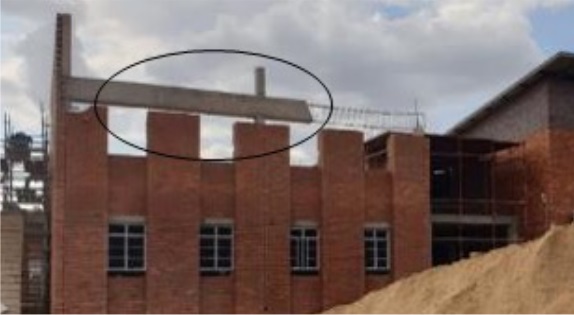
Inadequate load-bearing columns for span of concrete floor slab above
Douglas Primary School – Northern Cape Department of Education
The project entailed building a new, full-service school that the department began using in February 2021. When we visited the school in May 2022, we identified the following quality issues:
- Poor stormwater drainage resulted in water becoming stagnant and seeping under the doors into the hall, causing water damage and eroding the west side of hall.
- Retaining wall blocks were not properly secured and the top of the blocks were on the same level as the ground level, allowing loose soil to fall into the combi courts (sports grounds) when it rained.
- Leaks around the ventilation units in the hall, leading to water damage – when it rained, water seeped through the joints around the ventilation units.
- Artificial grass at the children’s playground was not properly laid and was lifting from the ground.
- Sections of the walkways were disintegrating.

Top retaining wall blocks loose
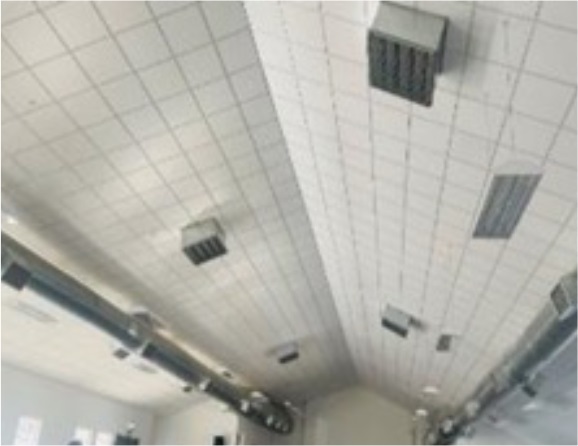
Leaks around ventilation units due to poor waterproofing
Commissioning
Commissioning is the final phase in completing a project. The contractor commissions the completed building to the client department for occupation and use.
There was a lack of coordination and collaboration between roleplayers at different levels of government, or even within the same institution. They did not work together to synchronise project completion, staff appointments and the availability of completed infrastructure and municipal services to ensure comprehensive infrastructure delivery.
Examples of poor commissioning of projects
Ntsongeni 130 and Lesseyton 752 housing projects – Eastern Cape Department of Human Settlements
We inspected 30 housing units during our site visit and found the following:
- Three housing units were handed over to beneficiaries in 2021 and early 2022 but were not being used.
- Two housing units were given to people who already had houses.
- Two housing units were rented out and there were tenants on the day of the visit; one was rented out to a company that does fibre installation.
- Two housing units handed over to beneficiaries in November 2021 did not have toilets.
The project is still ongoing 4,5 years after the original intended completion date.
Kidston Junior Primary School – Department of Basic Education
The construction of the new school in the Eastern Cape, designed to accommodate 974 learners, was completed in October 2021.
During our site visit in May 2022, we confirmed that only approximately 375 learners attend the school – less than half its capacity. This is due to a lack of intergovernmental relationships to ensure that suitable resources are acquired in time to use the school to its full capacity. The Eastern Cape Department of Education is responsible for the use of the school facilities.
Causes
In short, these failures in infrastructure delivery are due to the following matters which we have raised before and which need urgent attention:
- Inadequate needs assessment and project planning.
- Contractors appointed that cannot perform the work.
- Ineffective monitoring of project milestones and quality of work done.
- Failure in intergovernmental coordination and collaboration.
- Underperformance by contractors without consequences.
- Contractors not paid on time or overpaid.
Maintenance of infrastructure
While it is important to invest significantly in developing new infrastructure, it is equally important to maintain the existing infrastructure.
The general public experiences the impact of poor maintenance when using provincial roads. The Department of Transport assessed the overall extent of the road maintenance backlog for the sector during an indaba on provincial road maintenance in February 2022. It was reported that an estimated R75 billion investment is needed over the next five years to arrest the decline of the road network, with approximately 80% of the road network now being older than the 20-year design life. The total paved and gravelled network at provincial level is 184 816 kilometres.
The worsening condition of roads is caused by a backlog of maintenance that continues to grow because provinces do not make sufficient budget available for road maintenance and depend to a large extent on the grant received from the Department of Transport.
The poor maintenance of water infrastructure also has a direct impact on people’s lives. The budgets allocated for maintenance are not enough to catch up on the maintenance backlog, with the gap widening year after year.
The continuing backlog resulted in dilapidated water infrastructure that may not be able to meet the demands of the population.
We will report in more detail on the state of water infrastructure and maintenance in a comprehensive water sector report planned for 2023.
The public works sector is responsible for maintaining government properties, including health facilities, police stations and buildings to accommodate departments. The poor condition of government properties is caused by the sector’s reactive approach to maintenance. Most maintenance work is done in response to emergency requests by departments and little time or budget is spent on preventative maintenance.
Examples of poor maintenance of infrastructure
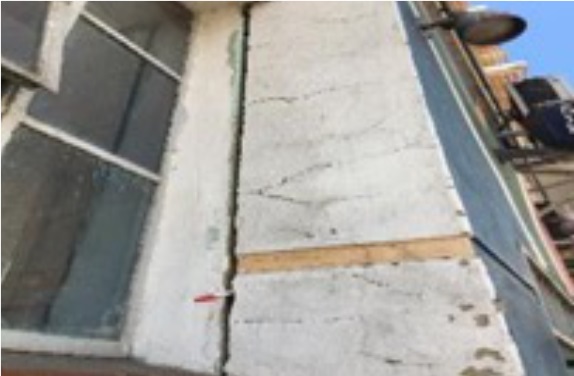
Police station – cracked column
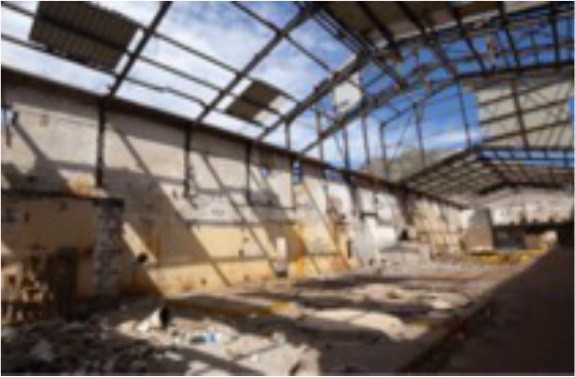
Fishmeal factory – abandoned and stripped by looters
Preventative maintenance can only be effective if the condition of buildings is regularly assessed. The Government Immovable Asset Management Act requires conditional assessments to be conducted every five years, but some properties were only assessed after eight years, leaving these assets to deteriorate without issues being rectified timeously. For example, the Property Management Trading Entity performed conditional assessments at 236 properties in 2021-22 – only 5% of the 66 115 properties in its portfolio.
Government officials and the public continue to use properties that are in poor condition, which has a negative impact on the effectiveness of the working environment and puts the safety of officials and the public at risk. In 2021-22, there were 1 867 properties in use that were classified by the Property Management Trading Entity as being in poor condition based on conditional assessments performed. There are currently 12 claims against the Property Management Trading Entity for harm caused by these poor conditions. One example of such harm is the death of a minor in a South African Police Service building due to a non-functioning elevator.
There are currently 1 510 government properties that are not being used. In most cases, these properties are unoccupied because they have not been maintained and are in a bad state. Unoccupied buildings are also often subject to vandalism, looting and illegal occupation.
Even though these properties are not used, costs such as property rates tax still need to be paid. When there are not enough fit-for-use properties available to departments, the Property Management Trading Entity signs lease agreements at high costs – which could have been avoided if properties had been properly maintained.
Inadequate maintenance and poor delivery on infrastructure projects not only affect government’s ability to deliver services to the public, but also have a significant cost implication, which puts further pressure on the fiscus.
Other pages in this section:
Other pages in this section:
